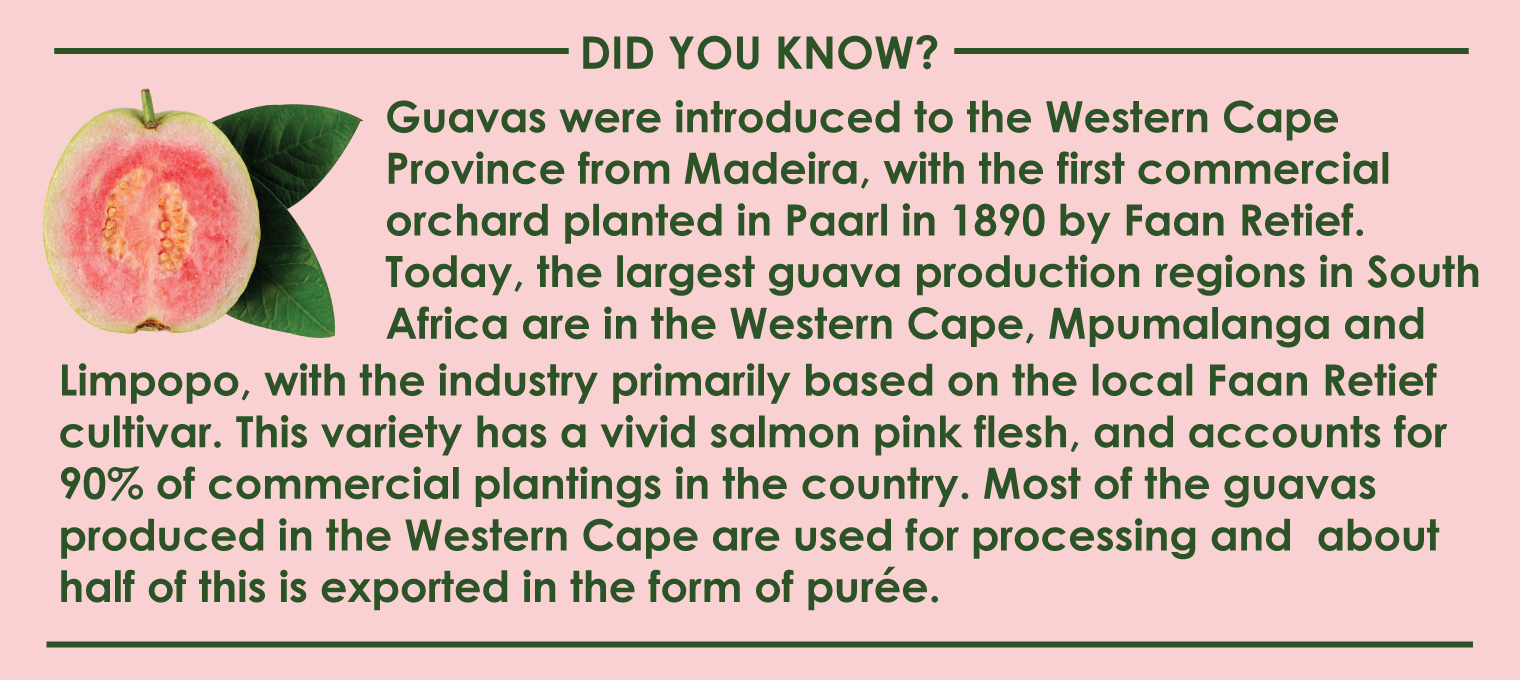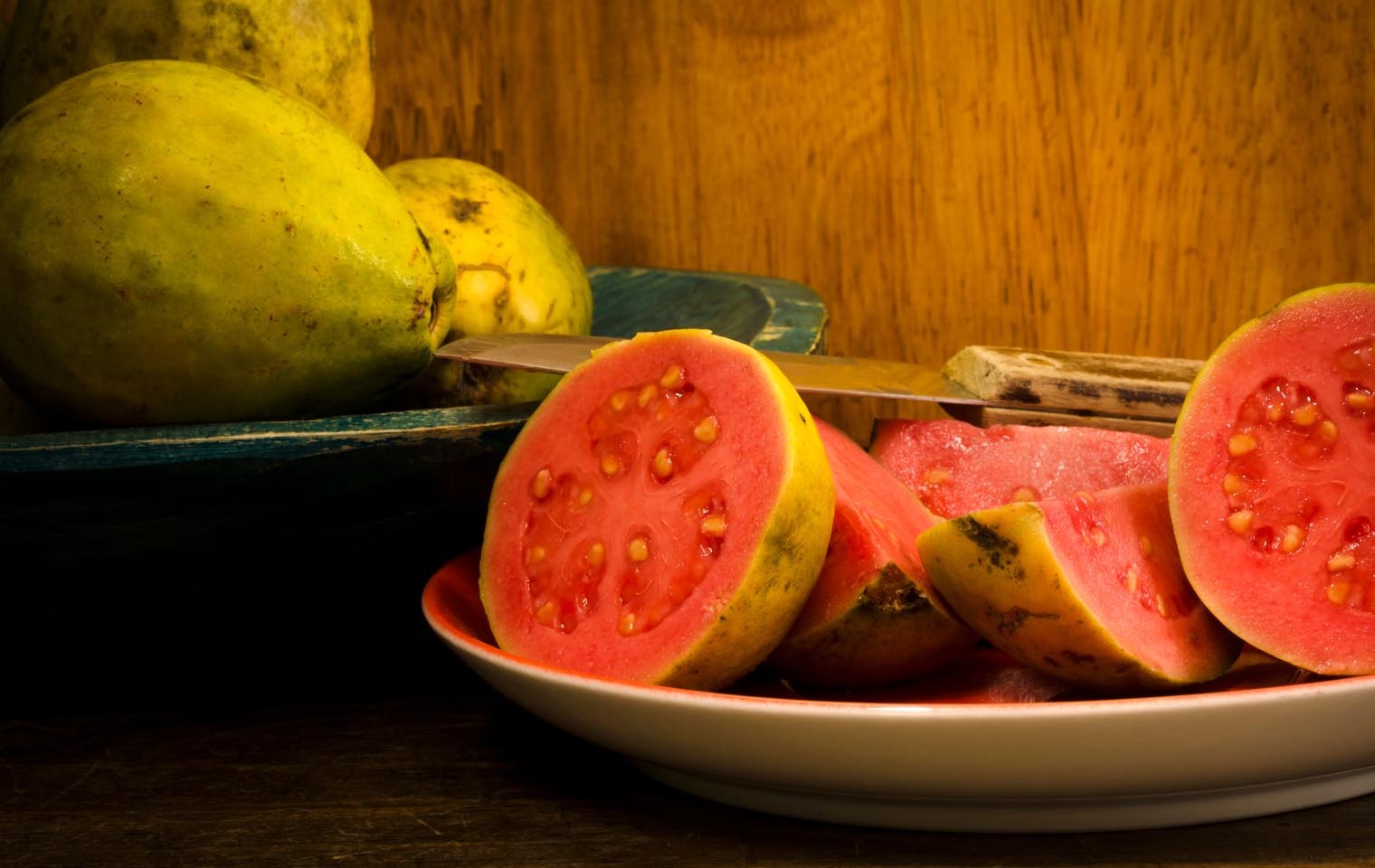Growing Guavas
If you have childhood memories of a guava tree in the garden and plucking the ripe fruit from the tree (or cleaning up the dropped fruit from underneath), you might be tempted to plant one in your garden and giving your kids or grandkids the same experience. Here’s our guide to planting, pruning, harvesting, and enjoying your guava tree.
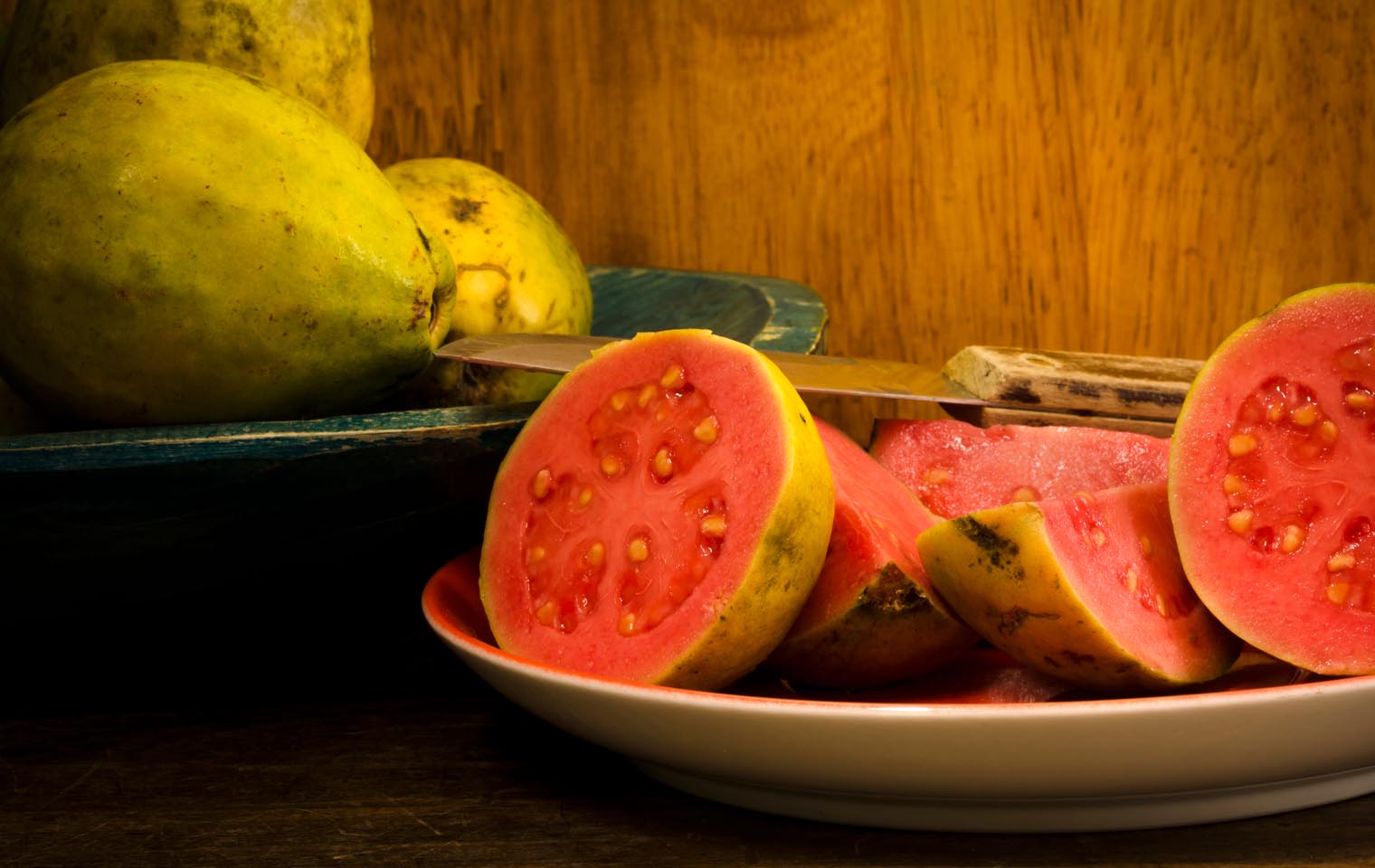
The guava (Psidium guajava) is a small, fairly slow-growing tree from the Myrtle (Myrtaceae) family. Originally from central America, it’s an excellent ornamental, with a distinctive flaky orange bark and dark green leaves all year round. If pruned regularly, it produces a lush canopy and an abundance of fruit, which it will keep producing for up to 40 years.
While the guava is a tropical fruit produced in tropical and subtropical regions across the globe, in South Africa it’s considered invasive in KZN, so it’s best planted in the Western Cape, where conditions are also ideal.

MANY USES
Guavas are generally eaten raw, and the fresh fruit is often included in fruit salad or served as a dessert with cream or evaporated milk. Canned guavas are also eaten this way or used in baked desserts. Because they’re so high in pectin, the fruit can be used to make sweets, preserves, jellies and jams. It’s also made into concentrate for use in various fruit juices, while dried and sugared fruit, guava squares and guava rolls are popular treats.
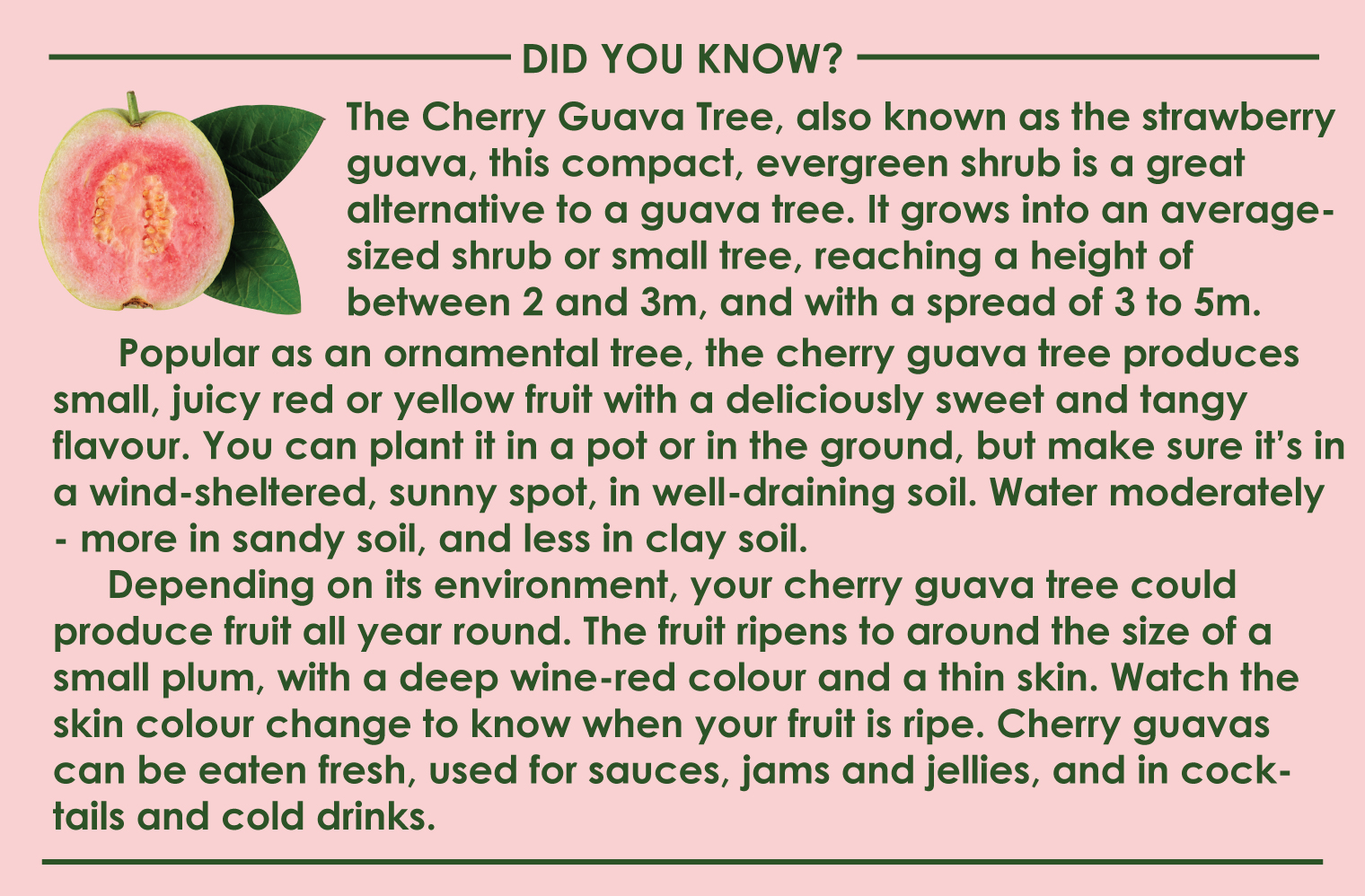
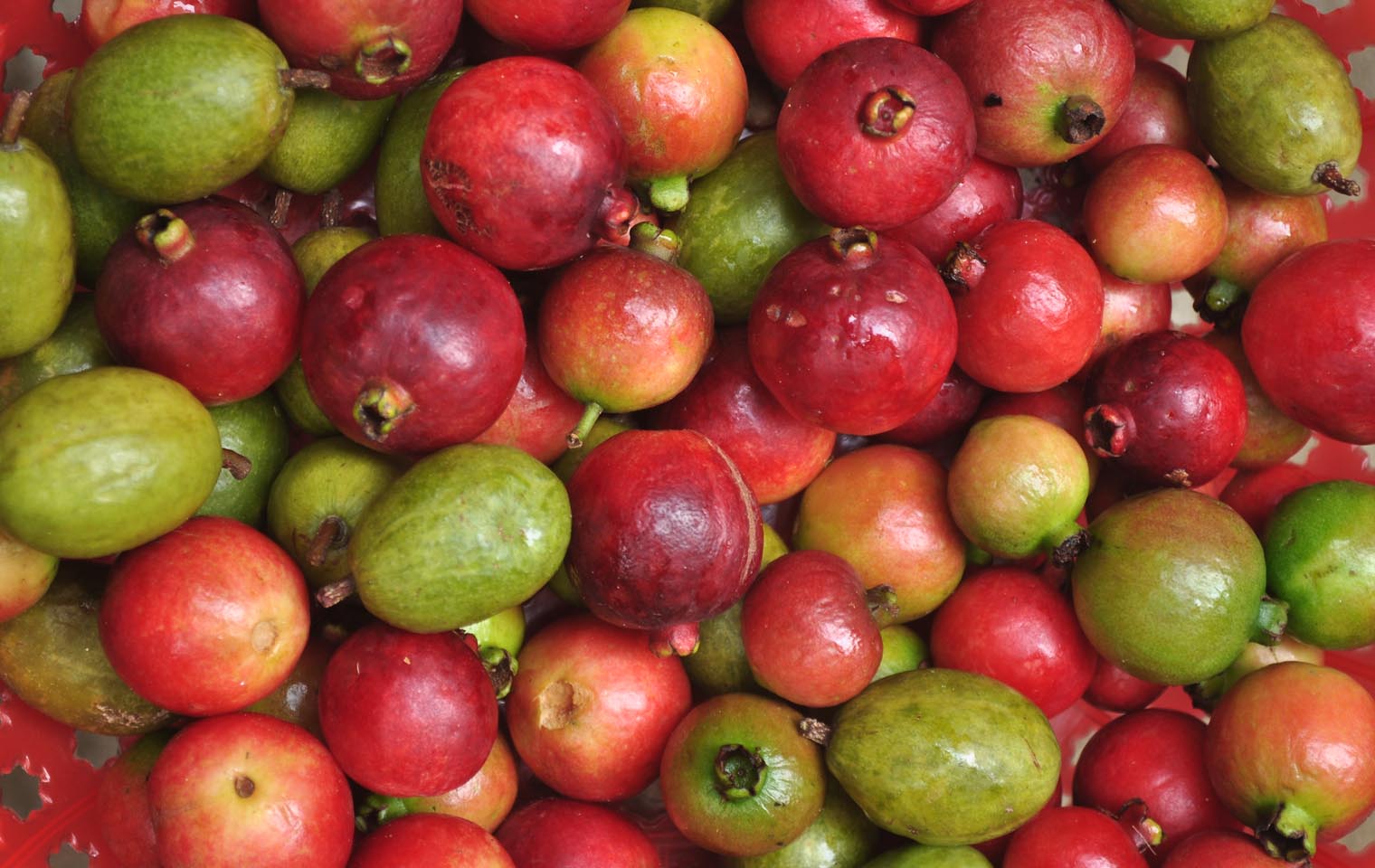
FLOWERS, FRUIT & FOLIAGE
The guava is a tree or shrub, normally pruned to a size of 2 to 3m in height, although if left unpruned, some varieties can grow up to 8m high. The guava tree is one of few tropical fruit plants which can grow to fruiting size in an indoor pot. It also makes an interesting bonsai specimen, if you are inclined to experiment in this way.
The leaves are dark green and oval, smooth on the upper surface and hairy on the lower surface, and the solitary flowers are white and around 3cm in diameter.
The trees begin to bear fruit from the second year after planting and can keep producing for up to 40 years. The fruits themselves are round or oval and depending on the variety, typically 6 to 12cm in diameter. The rough but edible skin ranges from green to yellow in colour and the flesh inside can be white, yellow, pink or red, with lots of small, hard seeds. While bees are the main pollinators, self-pollination also occurs.

PLANTING
Guavas grow well in any kind of soil, but they prefer well-drained soil. Plant in the warmer months in a deep hole, with plenty of compost and manure added to the soil. If planting more than one tree, plant them 2 to 3m apart. Good companion planting options for guava trees include lemon trees, marigold, comfrey and borage.
FEEDING
For good healthy growth and an abundance of fruit, your guava trees will need soil rich in nitrogen, phosphoric acid and potash. Use a fertiliser with these ingredients and feed it every 6 – 8 weeks while the tree is young. After that, every 3 or 4 months will do. Mulching with pine bark will also help to keep the soil acidic.
PRUNING
The Guava is a shrubby tree that grows densely and will naturally attempt to spread horizontally along the ground. Because of this shrubby nature you can prune it into the shape of a tree, bush or hedge.
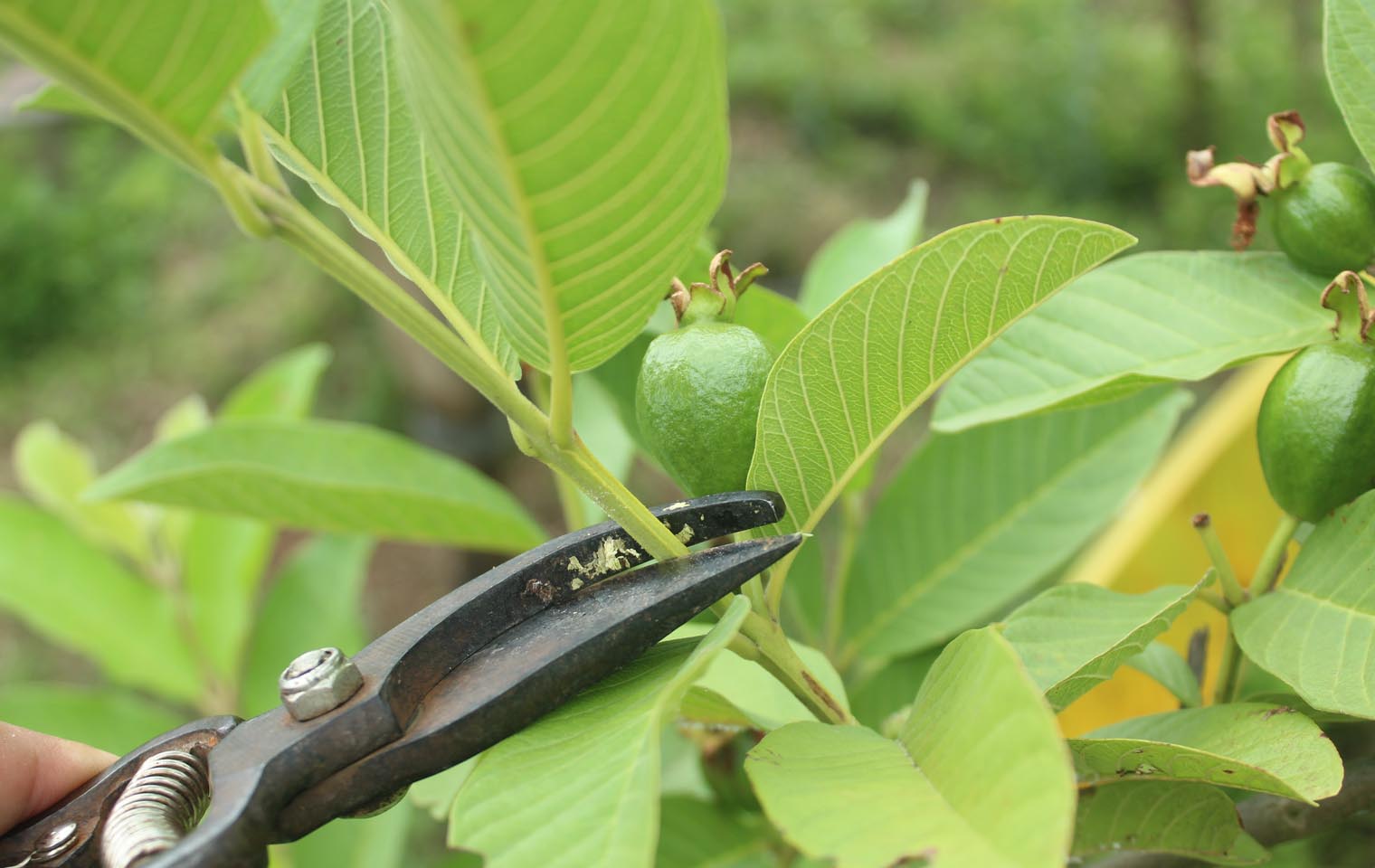
To prune into a tree shape, select a single upright stem as the trunk, and three or four lateral branches, removing all other shoots. Pinch back the tips of the lateral branches when they are around 90cm long, to encourage additional branches to grow. Continue to prune out any upright shoots that could compete with the main trunk. Fruiting limbs will begin to emerge from around 60cm from the ground and higher. Note that it’s best not to let your guava tree grow taller than 3m, as it then becomes susceptible to wind damage, including breaking or blowing over.
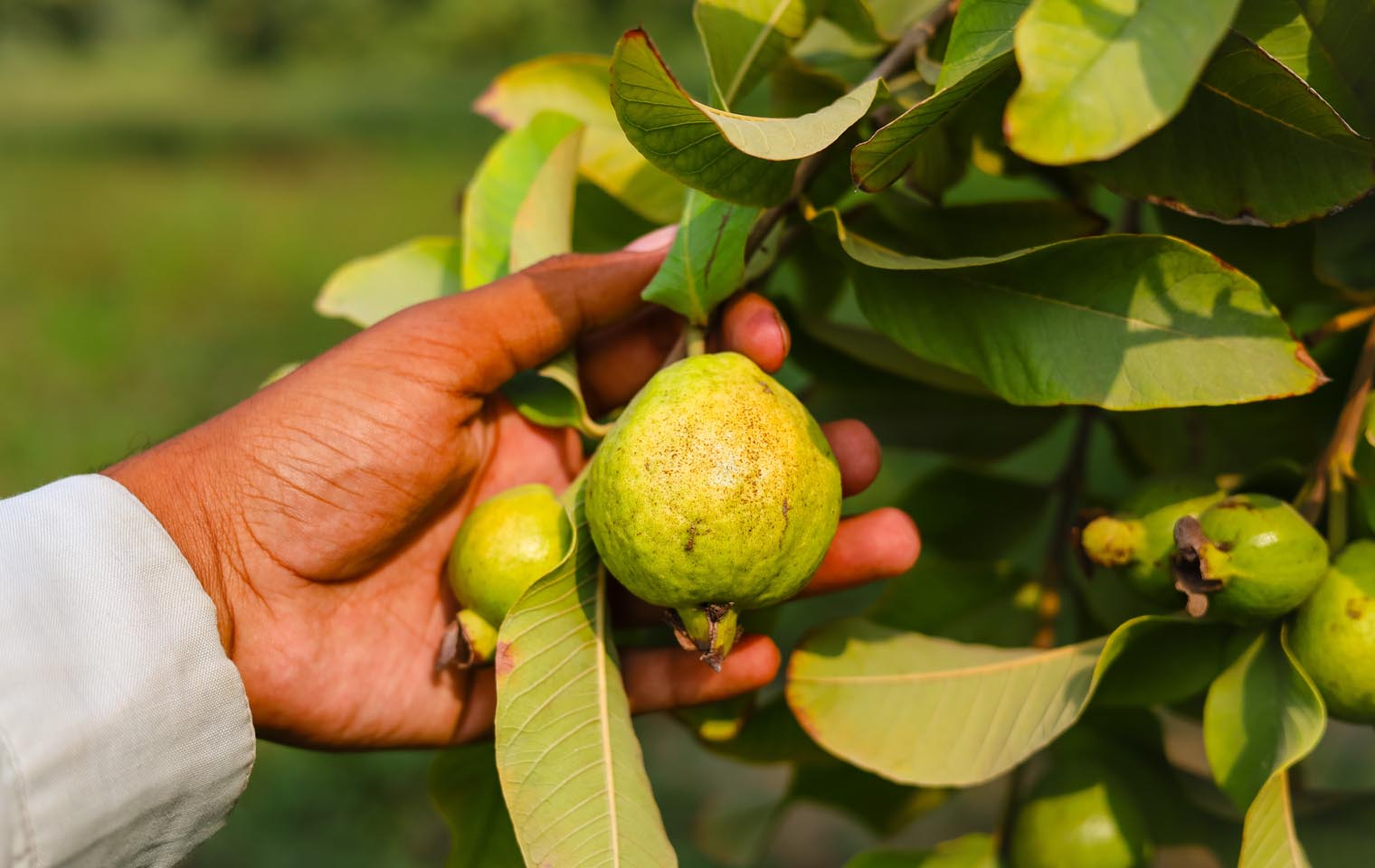
HARVEST
Your tree should start to bear fruit around two years after planting. The blooming season is in early spring, with fruit maturing between 90 and 150 days after the flowers bloom. When ripe enough to pick, they will give off their characteristic musky smell.
Once you’re harvesting your fruit straight from the tree, there’s no end to what you can do with it. Besides eaten whole like an apple, it can also be preserved in sugar syrup, made into jam, and used to create a “fruit cocktail” juice, when put through a juicer with any combination of apple, paw-paw, orange, mango and granadilla.
